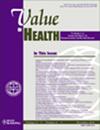监管和报销并行处理是否为患者提供更快的资金获取药物?使用澳大利亚平行程序评估癌症药物。
IF 4.9
2区 医学
Q1 ECONOMICS
引用次数: 0
摘要
目的:评估平行监管和报销流程对(1)资助决策方向、(2)资助建议前的时间滞后以及(3)癌症药物提交证据类型的影响。方法:对药品福利咨询委员会(PBAC)自引入并行处理以来审议的癌症药物的公共监管和报销决定文件进行审查。从这些文件和按审查过程类型提取的关于提交证据的类型和质量、供资决定和时间表的数据中确定了药物适应证对。使用单变量和多变量逻辑回归分析探讨关联。结果:从1590例中筛选出182例。与顺序评估相比,更高比例的平行审查提交了成本-效果/成本-效用分析(67.0% vs 79.7% p < 0.01),并使用了与市场批准相同的关键证据(77.5% vs 90.0%, p = 0.08)。支持证据的质量和用于两种过程的其他决策相关预测指标没有差异。接受平行审查的提交不太可能获得负面的公共资金决定(ORadj =0.46, 95%CI 0.14, 1.39;P = 0.17)。在并行处理下,与顺序处理相比,药物注册和PBAC资助建议之间的滞后时间大大缩短(67周)。结论:向监管机构和HTA机构提供的证据类型,以及随后的资助决定,并没有受到澳大利亚引入并行处理的影响。但是,并行进程大大缩短了作出初步供资决定所需的时间。本文章由计算机程序翻译,如有差异,请以英文原文为准。
Does Regulatory and Reimbursement Parallel Processing Provide Swifter Funded Access to Medicines for Patients? Evaluation of Cancer Medicines Using the Australian Parallel Process
Objectives
To assess the impact of a parallel regulatory and reimbursement process on (1) direction of funding decisions, (2) time lag until funding recommendation, and (3) type of evidence submitted, for cancer medicines.
Methods
Public regulatory and reimbursement decision documents were reviewed for cancer medicines considered by the Pharmaceutical Benefits Advisory Committee since the introduction of parallel processing. Medicine-indication pairs were identified from these documents and data extracted on the type and quality of evidence submitted, funding decisions, and timelines, by type of review process. Associations were explored using univariate and multivariable logistic regression analysis.
Results
A total of 182 cases were selected from the 1590 screened. Compared with sequential evaluation, a higher proportion of parallel review submissions presented a cost-effectiveness/cost-utility analysis (67.0% vs 79.7% P < .01) and used the same pivotal evidence as used for market authorization (77.5% vs 90.0%, P = .08). There was no difference in the quality of supporting evidence and other decision-relevant predictors used for either process. Submissions undergoing parallel review were not more likely to receive a negative public funding decision (adjusted odds ratio 0.46; 95% CI 0.14–1.39; P = .17). Under parallel processing, the lag between drug registration and Pharmaceutical Benefits Advisory Committee funding recommendation was drastically reduced (67 weeks) when compared with the sequential process.
Conclusions
The type of evidence supplied to regulators and health technology assessment bodies and the funding decisions that ensue have not been affected by the introduction of parallel processing in Australia. The parallel process has, however, drastically reduced the time taken to the initial funding decision.
求助全文
通过发布文献求助,成功后即可免费获取论文全文。
去求助
来源期刊

Value in Health
医学-卫生保健
CiteScore
6.90
自引率
6.70%
发文量
3064
审稿时长
3-8 weeks
期刊介绍:
Value in Health contains original research articles for pharmacoeconomics, health economics, and outcomes research (clinical, economic, and patient-reported outcomes/preference-based research), as well as conceptual and health policy articles that provide valuable information for health care decision-makers as well as the research community. As the official journal of ISPOR, Value in Health provides a forum for researchers, as well as health care decision-makers to translate outcomes research into health care decisions.
 求助内容:
求助内容: 应助结果提醒方式:
应助结果提醒方式:


